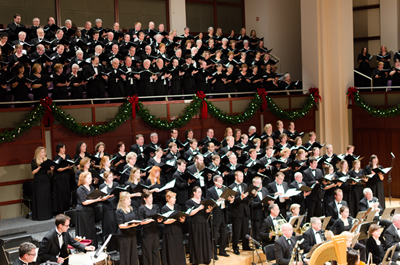The Berlin Philharmonic Wind Quintet formally opened the Chamber Arts Society’s 62nd season with a mostly splendid concert of music by Mozart, Danzi, Ligeti, Berio, and Nielsen, playing before a capacity audience in Reynolds Industries Theatre. It was the second outstanding German group to appear under the CAS’s auspices this season, coming just three weeks to the day after the Abegg Trio’s second all-Beethoven concert, given as part of September Prelude. Like the Abegg Trio, the BPO Wind Quintet is a seasoned ensemble still functioning with all of its original personnel. These Berliners aren’t all Germans, however — hornist Fergus McWilliam is from Inverness, Scotland. And, perhaps surprisingly, they aren’t even principals of the august orchestra — which fact demonstrates emphatically that the BPO truly plays from strength.
The concert was, overall, given from strength, too, although the opening number, a transcription (or “arrangement”) for winds of Mozart’s f-minor Fantasie, K.608, originally for mechanical organ, struck this listener as overblown (no pun intended); admittedly it’s one of the master’s lesser works…. Still, it allowed everyone opportunity to shine, and the playing — from McWilliam, who would also serve as the group’s spokesperson, and from flutist Michael Hasel, oboist Andreas Wittmann, lively and jovial clarinetist Walter Seyfarth, and bassoonist and senior member Henning Trog — was bracing in its clarity, precision, immaculate phrasing, and attention to dynamic niceties. There was more of the same in a well-crafted quintet (in F) by Franz Danzi, a composer whose music this ensemble has campaigned and recorded.
Things then picked up considerably for the balance of the program, which encompassed three widely-varied 20th-century scores. Six Bagatelles by György Ligeti proved intellectually fascinating and rewarding, too, in terms of the excellence of the performances. Several are Bartók-like, and one is a touching memorial tribute to the older composer. The four sections of Luciano Berio’s “Opus Number Zoo” aren’t all that much more substantial than the brief Ligeti numbers but they’re a lot less spiky and they were given here with English texts “reflecting on the human condition” from the perspective of animals. McWilliam said they suggest Stravinsky but the impression they conveyed in the hall, with some German-accented English words, was in fact more akin to William Walton’s celebrated Façade. (The ensemble has recorded this Berio work, and several others performed in Durham; for the group’s discography, see their website, linked in the opening paragraph.)
The grand finale was Carl Nielsen’s magnificent and deeply moving Quintet, Op. 43 (1922). The score is in three movements, the last of which is a Prelude, marked “Adagio,” followed by eleven variations. Its recurring theme is a stirring chorale; I’m grateful for Ray Ashley’s online essay on the piece, which reveals its source, for it has long sounded (to me) like something Bach himself might have harmonized. Instead, Ashley writes, “This is a chorale tune in A [m]ajor that Nielsen wrote himself called ‘Min Jesus, Lad Mit Hjerte Faa’ (‘My Jesus make my hear[t] to love thee’),” composed “as a setting to a Lutheran hymn in 1916.” The chorale recurs in a coda to the quintet, capping the quite magical last movement in a most memorable way. The work itself is regarded as one of Nielsen’s finest compositions and as perhaps the greatest of all Danish chamber works, too. The last movement was played at Nielsen’s funeral in 1931.
The performance was superb in every respect and was easily the highlight of a very fine evening. Protracted applause was ultimately rewarded with a bit of American fluff, albeit in a Polish arrangement — a potpourri of folk tunes done up by Kazimierz Machala.
Since the Chamber Arts Society is sometimes known as the String Quartet Society of Durham — and even the Tokyo and Emerson Society — the fact that a wind ensemble filled up the place may seem remarkable, indeed.
Finally, folks who see glitz as the best antidote to short attention spans on the parts of domestic audiences may not have been impressed with the visitors’ high levels of refinement and sophistication, hallmarks of interpretive approaches that exemplify the best of what might be described as “the European tradition.” That’s not to embrace tradition for tradition’s sake, but there’s a marked difference in the playing of groups like the Berlin Philharmonic Wind Quintet and the Abegg Trio as opposed to some of what passes for art over here in America nowadays. There are, in fact, many viable ways to deal with masterworks (and lesser works, too). It is those differences that, mingled over the course of many performances, ultimately form the impression of a particular score one carries in one’s mind’s ear. It was good to be reminded of this — twice thus far this season— by the Chamber Arts Society. The organization’s next concert will be on November 17, when pianist Leon Fleisher appears with that aforementioned Tokyo String Quartet. As of this writing, tickets are still available. See https://cvnc.org/calendar/series/triangle/ChamberArtsSociety.htm for details.











